First Time in Costa Rica: What's Covered
Costa Rica packs cloud forests, volcanoes, and beaches into West Virginia. Dry season (Dec-Apr) brings sunshine and 20-40% higher prices; green season offers morning sun with afternoon showers. First visits work best at 10-14 days, covering Arenal, Monteverde, and the beaches. Choose SJO airport for central destinations or Liberia for Guanacaste. Mountain roads make distances deceptive—add 30% to drive times.
Quick Facts:
- 10-14 days covers 3-4 regions without rushing through destinations
- Regional weather varies dramatically—Caribbean driest Sept-Oct, Pacific wettest
- 4WD essential for Monteverde and remote beaches
- Budget $100-200 daily mid-range, including car, hotel, meals, activities
- Book 4-6 months ahead for Christmas, New Year’s, Easter
Must-See Regions:
- Arenal – Hot springs, volcano views, wildlife
- Monteverde – Cloud forest with quetzals and canopy tours
- Manuel Antonio – Beach-meets-rainforest with guaranteed sloths
One-week trips focus on 2 regions; two-week routes allow 3-4. Families love Manuel Antonio’s accessibility. Tortuguero needs boats; domestic flights save time.
If you need any help with a Costa Rica car rental, contact us now!
Planning your first time in Costa Rica feels like preparing for several vacations rolled into one — from misty cloud forests and active volcanoes to pristine beaches and vibrant wildlife habitats. After helping thousands of travelers discover the magic of this compact yet incredibly diverse country, I can tell you that smart preparation makes all the difference.
Costa Rica may be small (about the size of West Virginia or Denmark), but don’t let that fool you. The varied landscapes, climates, and activity options mean you’ll need a thoughtful approach to create your perfect trip. Whether you’re dreaming of spotting colorful toucans in the rainforest canopy, catching waves on the Pacific coast, or simply relaxing in thermal hot springs beneath a volcano, this guide will help you shape an unforgettable Costa Rican adventure.
Let’s dive into everything you need to know to plan your 2025 Costa Rica vacation, from seasonal considerations and regional highlights to practical logistics and insider tips that most travelers miss. ¡Vamos!
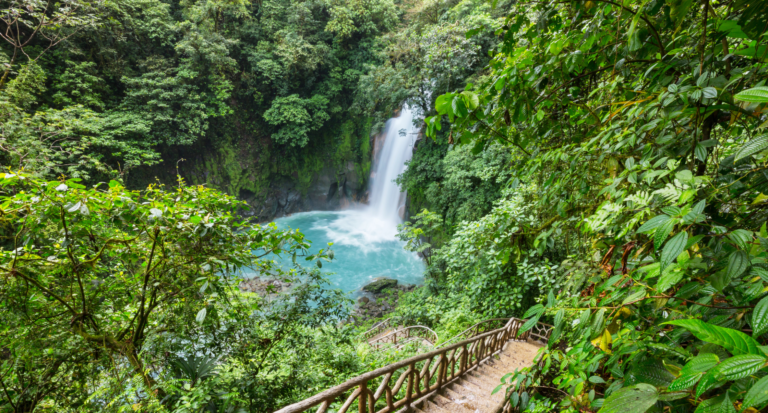
When Should You Visit Costa Rica for the Best Experience?
Costa Rica’s geography creates a fascinating climate puzzle that goes far beyond simple “rainy” and “dry” labels. The country’s mountain ranges, two ocean coastlines, and varying elevations create microclimates that can differ dramatically even within short distances.
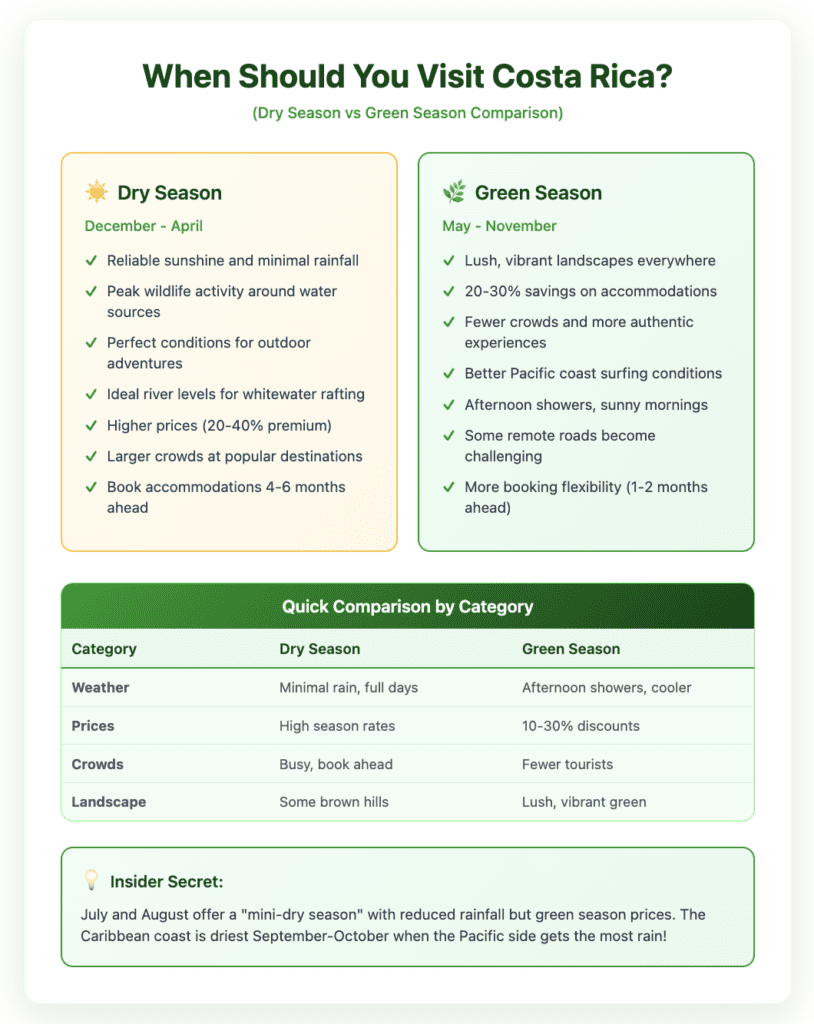
Why Does Dry Season Work for Most First-Timers?
The dry season (December-April) draws most visitors with reliable sunshine and minimal rainfall, especially in the popular beach regions of Guanacaste and the Central Pacific. These months offer ideal conditions for wildlife viewing, as animals gather around remaining water sources, making them easier to spot. However, this period represents the high season, with hotel prices often 20-40% higher than during the green season. Popular destinations can feel crowded, especially around holidays.
Dry season highlights:
- Reliable sunshine for beach days and outdoor adventures
- Less mud on hiking trails and rural roads
- Peak wildlife activity in many regions
- Perfect river levels for whitewater rafting (January-March)
- Colorful blooming trees (especially in February-March)
For detailed dry season travel strategies, see our Dry Season in Costa Rica: Peak Season Travel Tips guide.
Should You Consider Green Season Instead?
For comprehensive green season advantages and considerations, check our Visiting Costa Rica in Green Season: Pros and Cons guide.
Don’t dismiss the green season (May-November), which many locals and repeat visitors actually prefer. The common belief that it “rains all day” simply isn’t true — typical patterns bring sunny mornings with afternoon showers that often clear by evening. The landscape transforms dramatically, with dusty brown hillsides bursting into lush emerald expanses within weeks of the first rains.
Green season advantages:
- Lush, vibrant landscapes with spectacular greenery
- Fewer crowds at popular destinations
- Lower prices (look for 20-30% discounts and special offers)
- Clearer morning hours (rain typically comes in afternoon showers)
- Better surfing conditions on the Pacific coast
Green season secret: July and August offer a wonderful “mini-dry season” with reduced rainfall yet still with low-season prices. This makes it an excellent choice for summer travelers. The Caribbean coast often experiences its driest periods in September and October — precisely when the Pacific side sees its heaviest rainfall — creating year-round opportunities for beach lovers.
For detailed regional weather patterns throughout the year, check out our guide to Costa Rica’s Regional Weather Patterns.
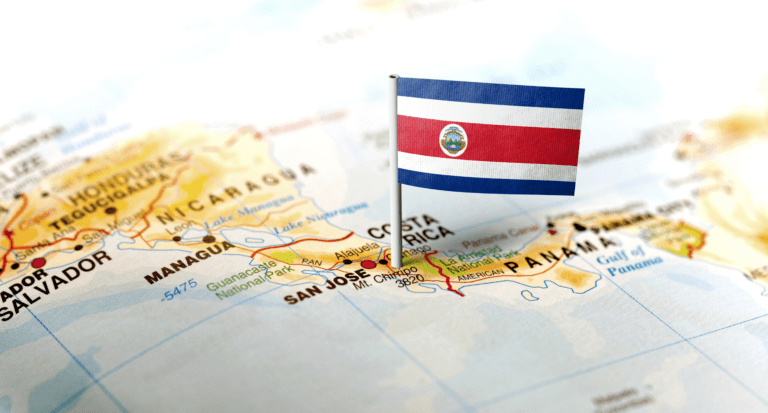
How Much Time Do You Really Need in Costa Rica?
The ideal length for a Costa Rica vacation depends entirely on your travel style and what you hope to experience. Many first-time visitors underestimate both the country’s diversity and the time required to travel between destinations. Costa Rica’s mountainous terrain means that distances that appear short on a map can take surprisingly long to navigate.
What Can You Actually See in 5-7 Days?
For those with limited time, focusing on just one or two regions prevents spending your precious vacation in transit. Popular combinations for shorter stays include pairing Arenal Volcano with Monteverde Cloud Forest, or choosing a single beach destination with perhaps a day trip to a nearby attraction. With this timeframe, resist the temptation to cram too many destinations into your trip — you’ll spend more time in a vehicle than actually experiencing the country’s natural wonders.
If you’re limited to one week, our One-Week Costa Rica Itinerary provides efficient routes designed to maximize experiences while minimizing travel time.
Why Is 10-14 Days the Sweet Spot?
The perfect length for a first visit falls around 10-14 days, allowing you to experience three or four distinct regions without constant rushing. This duration enables a balanced trip — perhaps combining the volcanic landscapes of Arenal, the mysterious cloud forests of Monteverde, beach time on either coast, and a taste of local culture in smaller towns or the Central Valley.
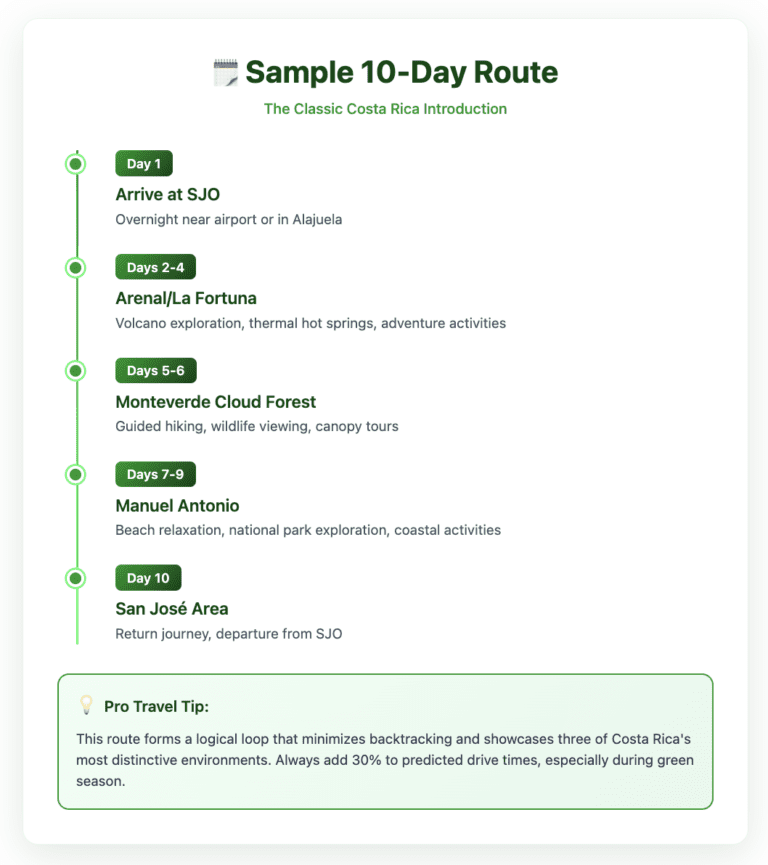
This route forms a logical loop, minimizes backtracking, and showcases three of Costa Rica’s most distinctive environments. For those with two weeks to spare, our Two-Week Costa Rica Itinerary offers the perfect balance of experiences.
Pro tip: Don’t underestimate travel times! A 150km journey can take 3-4 hours on mountain roads. Always add at least 30% to predicted drive times, especially during green season.
Which Costa Rica Regions Match Your Travel Style?
Costa Rica packs extraordinary diversity into a small area, with each region offering distinctly different experiences, landscapes, and activities. Understanding these regional characteristics helps shape a trip that matches your interests and travel style.
Why Start in the Central Valley?
The Central Valley cradles Costa Rica’s capital city and about 70% of the country’s population. Its elevation (1,000-1,500m) creates a year-round spring-like climate with comfortable temperatures. Beyond San José’s urban attractions like the Gold Museum and National Theater, the surrounding valley offers coffee plantation tours where you can learn about the country’s famous export directly from farmers and baristas. Day trips to nearby volcanoes like Poás and Irazú provide dramatic crater views and hiking opportunities.
Don’t miss: A barista-led coffee tasting in one of San José’s specialty coffee shops, where you’ll learn why Costa Rican beans are among the world’s most sought-after.
What Makes the Northern Plains Special?
The Northern Plains and Arenal region have become synonymous with Costa Rican adventure tourism. Dominated by the perfectly cone-shaped silhouette of Arenal Volcano, this area blends geothermal wonders with rainforest adventures. The volcano’s previous decades of activity created natural hot springs that now offer relaxing soaks with stunning views. Nearby La Fortuna waterfall plunges 70 meters into a turquoise swimming hole, while hanging bridges provide canopy-level forest access.
Don’t miss: A night soak in thermal hot springs with the volcano silhouette visible against the night sky — an iconic Costa Rican experience.
Why Do Cloud Forests Feel Like Another Planet?
The cloud forests of Monteverde present an entirely different ecosystem. Located along the continental divide at elevations above 1,400 meters, these forests capture moisture from clouds moving between the Pacific and Caribbean. This creates an otherworldly environment where mist weaves through moss-draped trees. The dramatic difference from lowland rainforests becomes immediately apparent as temperatures drop and unique species appear — most famously the Resplendent Quetzal with its shimmering plumage and trailing tail feathers.
Don’t miss: An early morning guided hike offers your best chance to spot the elusive Resplendent Quetzal, considered one of the world’s most beautiful birds.
Which Coast Offers the Best Beach Experience?
With the lowest rainfall in Costa Rica, the North Pacific region boasts sun-soaked beaches, tropical dry forests, and a strong cowboy heritage. The development as a tourism hub has created an infrastructure of resorts, restaurants, and activities that make it particularly accessible for first-time visitors. The beaches range from developed hotspots like Tamarindo to hidden gems along the Papagayo Peninsula.
Don’t miss: A sunset catamaran cruise in the Gulf of Papagayo, where you might spot dolphins while enjoying the legendary Pacific sunset.
What About the Central Pacific?
Just a 1.5-hour drive from San José, the Central Pacific offers easy beach access combined with incredible biodiversity. Manuel Antonio National Park perfectly demonstrates this combination, with troops of monkeys often visible from the same beaches where visitors relax. The region balances development with natural beauty, providing comfortable amenities without completely sacrificing authentic experiences.
Don’t miss: Manuel Antonio National Park, where rainforest meets beach and sloths, monkeys, and toucans are frequently spotted.
How Different Is the Caribbean Coast?
With strong Afro-Caribbean influences, this region has a distinctly different feel from the rest of Costa Rica. The cuisine features coconut in many dishes, reggae rhythms fill the air, and the pace of life slows noticeably. Beyond the cultural distinctions, the Caribbean coast offers unique wildlife viewing opportunities, particularly in Tortuguero National Park, known for its sea turtle nesting beaches and canal-based transportation.
Don’t miss: Tortuguero National Park, often called “Costa Rica’s Amazon,” where canals replace roads and turtle nesting creates one of nature’s most moving spectacles.
Where Can You Find Pristine Wilderness?
The most biodiverse region hosts pristine rainforests and remote beaches. Corcovado National Park anchors the conservation efforts here, protecting some of the last remaining old-growth rainforest in Pacific Central America. The region’s remoteness has preserved both its natural systems and a more authentic Costa Rican lifestyle away from heavy tourism development.
Don’t miss: Corcovado National Park, harboring 2.5% of the world’s biodiversity in a single protected area — a bucket-list destination for wildlife enthusiasts.
Which Transportation Method Works Best for Your Style?
Transportation decisions fundamentally shape your Costa Rica experience, affecting everything from which destinations you can reasonably include to how much time you’ll spend in transit versus enjoying activities.
Which Airport Should You Choose?
Costa Rica has two main international airports, and your choice significantly impacts your trip:
Juan Santamaría International Airport (SJO) near San José serves as the primary gateway, with more flights from more origins and convenient access to the Central Valley, Caribbean coast, and central/southern Pacific regions.
Daniel Oduber Quirós International Airport (LIR) in Liberia provides direct access to Guanacaste beaches, with many visitors reaching their resort within an hour of landing.
The decision isn’t merely geographical — flight schedules and prices can vary significantly between the two airports. Many travelers find SJO offers more competitive pricing and scheduling options, while LIR provides a more relaxed arrival experience with typically shorter immigration lines.
For a detailed comparison to help you decide which airport works best for your trip, check out our comprehensive Choosing the Right Costa Rica Airport guide.
Should You Rent a Car or Take Shuttles?
Costa Rica offers several transportation methods, each with distinct advantages:
Why Choose a Rental Car?
Renting a car provides unmatched flexibility and access to off-the-beaten-path locations. This option works especially well for independent travelers comfortable navigating occasionally challenging road conditions.
Important considerations:
- For many regions (Monteverde, parts of Nicoya Peninsula, remote beaches), a 4WD vehicle is essential
- Roads are often poorly marked — download Waze, rent a GPS or use offline maps
- Costa Rica has mandatory insurance that cannot be waived — budget accordingly
- Prepare for mountain roads with blind curves, occasional potholes, and limited lighting at night
For comprehensive road information, see our Driving in Costa Rica: What to Expect on the Roads guide.
When Do Private Shuttles Make More Sense?
Door-to-door shared or private shuttle services connect most major tourist destinations. Not only do shuttles eliminate navigation stress, but they also allow you to fully appreciate the scenery during transit rather than focusing on driving.
Shuttle advantages:
- Professional drivers familiar with challenging routes
- Ability to work or relax during transit
- Environmentally friendlier option
- Fixed schedules for shared options provide structure
What About Public Buses?
Costa Rica has an extensive and affordable public bus network connecting virtually all towns. While economical, buses make frequent stops, rarely offer direct routes between tourism destinations, and provide limited space for luggage — making them better suited for backpackers than families or those with time constraints.
When Do Domestic Flights Save Time?
For longer distances, consider domestic flights on Sansa or Green Airways. These small planes turn 6-hour drives into 30-minute flights and provide access to remote areas like Tortuguero or Drake Bay that would otherwise require complex multi-mode journeys.
For more on navigating Costa Rica’s small airports, check out our Costa Rica’s Domestic Airports: Where to Find Them and How to Use Them guide.

Where Should You Stay for the Best Experience?
Costa Rica’s accommodation landscape reflects its biodiversity, offering everything from rustic eco-lodges to sophisticated luxury resorts. Understanding the distinct character of each option helps you choose lodging that enhances rather than merely serves your experience.
Why Consider Eco-Lodges?
Eco-lodges represent Costa Rica’s commitment to sustainable tourism, with options ranging from basic to luxurious but sharing a dedication to environmental stewardship. These properties typically integrate harmoniously with their surroundings, often featuring open-air designs that bring nature closer.
Beyond sustainable practices like solar power and rainwater harvesting, many eco-lodges actively participate in conservation through private reserves and community programs. These accommodations appeal to travelers seeking immersion in natural settings, though some have limitations like limited electricity hours or absence of air conditioning.
Where to find them: Throughout the country, but particularly excellent options exist in Tortuguero, Osa Peninsula, and Monteverde.
What About Traditional Hotels and Resorts?
From boutique hotels to large resorts, traditional accommodations are widely available:
All-inclusive resorts: Concentrated in Guanacaste, these offer comprehensive packages including meals and activities. They’re perfect for travelers seeking worry-free vacations with predictable costs.
Boutique hotels: Found nationwide, these smaller properties often feature distinctive design and personalized service impossible at larger properties. In the Central Valley, restored coffee plantation homes provide historic charm, while Pacific coast boutique hotels might feature infinity pools overlooking dramatic ocean views.
Chain hotels: Primarily located in the San José area, offering familiarity and loyalty program benefits that appeal to business travelers and those in transit.
How Do Vacation Rentals Compare?
Airbnb, VRBO, and local rental agencies offer homes and apartments with more space, kitchen facilities, and privacy — often providing better value for families or groups.
Beyond the obvious advantage of more space, these properties offer kitchen facilities that allow both budget savings on meals and opportunities to experiment with local ingredients from farmers’ markets.
Where to find them: Most concentrated in beach areas like Tamarindo, Jacó, Manuel Antonio, and increasingly, the southern Nicoya Peninsula around Santa Teresa.
When Should You Book Accommodations?
- Peak season (December-April): Book 4-6 months ahead, especially for Christmas/New Year’s and Easter weeks
- Green season (May-November): More flexibility with 1-2 months advance booking often sufficient
- Budget accommodations: Book further ahead for budget options, as affordable quality places are limited and fill quickly
- Special occasions: Request “special view” rooms or celebration packages directly with properties after booking
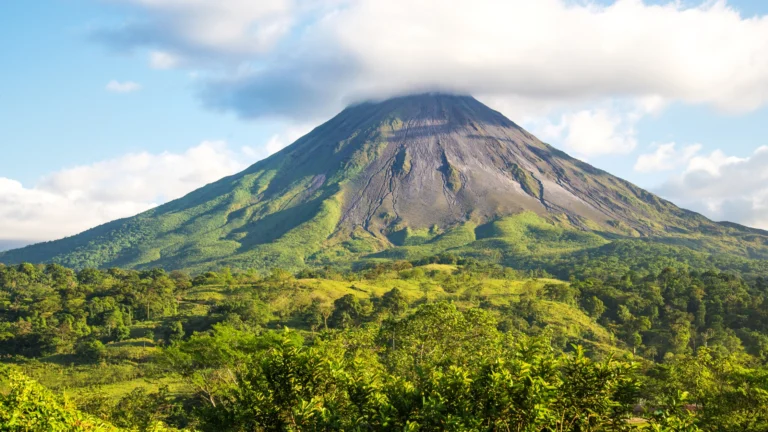
What Are the Experiences You Can't Miss?
While personal interests should shape your trip, certain experiences stand out as quintessentially Costa Rican, combining natural wonders with the country’s conservation efforts.
Why Is Arenal Volcano So Popular?
Arenal Volcano National Park anchors many first-time trips, and with good reason. The volcano’s perfectly cone-shaped profile creates a dramatic backdrop visible for miles (weather permitting). Although it stopped erupting in 2010, the surrounding landscape bears testament to its previous activity through lava fields, where pioneer plants gradually reclaim the hardened rock.
The volcano’s geothermal activity heats dozens of natural hot springs in the area, ranging from luxurious spa-like settings to rustic riverside pools. The combination of hiking opportunities, wildlife viewing, hot springs relaxation, and adventure activities like canyoning and white water rafting makes this region a perfect introduction to Costa Rica’s appeal.
What Makes Monteverde Cloud Forest Special?
Monteverde Cloud Forest feels like entering another world — one where clouds move through the trees rather than above them. The specialized ecosystem supports extraordinary biodiversity, including over 400 bird species and 100 mammal species within a relatively small area.
Visitors experience this environment through guided hikes, where naturalists point out easily-missed wildlife, or through dramatic zipline canopy tours that combine adventure with environmental education. The area’s scientific significance attracts researchers from around the world, while the town of Santa Elena maintains a charming, low-key atmosphere.
How Does Manuel Antonio Combine Beach and Wildlife?
Manuel Antonio National Park perfectly captures Costa Rica’s “beach meets biodiversity” appeal. Despite being the country’s smallest national park, it consistently ranks among the most visited due to its accessibility and concentration of wildlife.
Four stunning beaches within the park boundaries allow visitors to combine wildlife observation with beach relaxation. The primary forest trails often reveal sloths lounging in cecropia trees, troops of capuchin and squirrel monkeys moving through the canopy, and colorful bird species at every turn.
Where Can You See Costa Rica’s Amazing Wildlife?
Costa Rica hosts about 5% of the world’s biodiversity in just 0.03% of Earth’s landmass. Some wildlife experiences to prioritize:
Sloth spotting: While visible throughout many rainforest areas, Manuel Antonio and the Caribbean coast offer reliable sightings.
Monkey viewing: Four species inhabit Costa Rica, with white-faced capuchins being most common around Manuel Antonio and Corcovado.
Sea turtle nesting: Witness this remarkable event at Tortuguero (July-October, primarily), Ostional (arribadas year-round, peaking August-November), or Las Baulas/Playa Grande (October-March).
For more detailed information about where to find specific species, check out our Wildlife Viewing Hotspots in Costa Rica guide.
Which Adventure Activities Are Worth Your Time?
Costa Rica pioneered eco-adventure tourism, offering numerous ways to experience its natural wonders actively:
Canopy ziplines: Soar above the forest canopy on cables stretching hundreds of meters. Top spots include Monteverde, Arenal, and Manuel Antonio.
Whitewater rafting: The Pacuare River offers world-class rapids through pristine rainforest gorges, while the Sarapiquí and Savegre rivers provide options for various skill levels.
Canyoning: Rappel down waterfall faces in the Arenal area for an adrenaline-pumping experience combined with extraordinary scenery.
What Should You Know About Practical Planning?
The difference between a good Costa Rica vacation and a great one often comes down to practical planning — understanding the country’s costs, preparing appropriately for varied climates, and addressing health and safety considerations before they arise.
How Much Should You Budget?
Costa Rica isn’t the budget destination some expect. While not as expensive as European destinations, it’s pricier than many Central American neighbors due to its developed tourism infrastructure and stability.
Budget travelers can manage $50-75 per day with hostel dormitories, public bus transportation, meals at local sodas (small restaurants), and self-guided hikes and free beaches.
Mid-range travelers should budget $100-200 per day for standard hotel rooms, rental car or shuttle transportation, a mix of restaurants and local eateries, and guided tours and park entrances.
Luxury experiences start at $250+ per day including upscale lodges and resorts, premium car rental, fine dining, and exclusive experiences like private guides and helicopter tours.
What Are the Major Expenses?
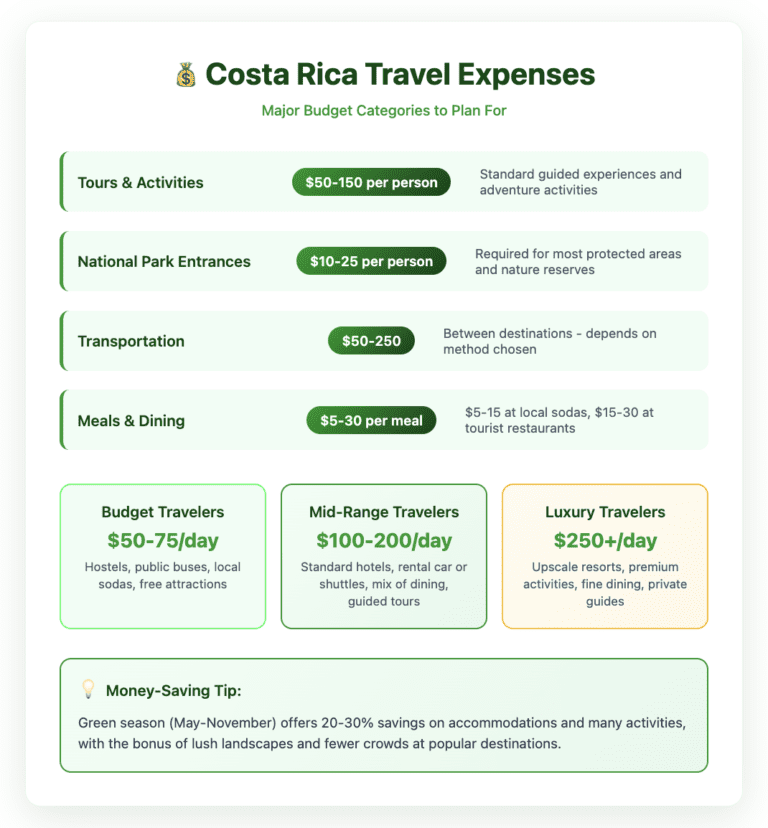
What Should You Pack for Multiple Climates?
Packing smart for Costa Rica’s varied climates saves hassle and expense:
For All Destinations:
- Quick-dry clothing (humidity makes cotton slow to dry)
- Rain jacket/poncho (regardless of season)
- Sunscreen, hat, and sunglasses
- Insect repellent (preferably with picaridin or DEET)
- Reusable water bottle (tap water is safe in most areas)
- Comfortable walking shoes with good traction
For Cloud Forests and Mountains:
- Layers for temperature changes
- Light fleece or sweater (evenings can be quite cool)
- Waterproof hiking boots
- Waterproof bag covers or dry bags
For Beaches and Lowlands:
- Lightweight, breathable clothing
- Swimwear and beach gear
- Sandals and water shoes
- Light long sleeves and pants for bug protection
Packing tip: Laundry services are readily available in most tourist areas, so pack for a week even for longer stays.
How Safe Is Costa Rica for Travelers?
Costa Rica is generally safe and has excellent healthcare, but preparation ensures a smooth trip:
Health Precautions:
- No vaccinations are required for entry, but staying current on routine vaccines is recommended
- Consider travel insurance with medical evacuation coverage
- Stay hydrated and use sunscreen liberally — the sun is intense year-round
Safety Practices:
- Exercise the same caution you would in any tourist destination
- Don’t leave valuables visible in parked vehicles
- Use hotel safes for passports and extra cash
- Be cautious when swimming — some beaches have strong currents
Families traveling with children will find Costa Rica generally accommodating, with many activities suitable for young adventurers. For specific recommendations, see our Costa Rica with Kids: Family-Friendly Travel Tips guide.
Why Should You Care About Sustainable Tourism?
Costa Rica has pioneered eco-tourism development, with environmental protection woven into the national identity. Understanding and supporting these efforts allows visitors to contribute positively to destinations they enjoy.
What Makes Costa Rica Different?
The country’s commitment to sustainability extends far beyond marketing slogans. Costa Rica currently protects approximately 25% of its territory through national parks, biological reserves, and wildlife refuges — an extraordinary percentage globally. The electrical grid runs on over 99% renewable energy sources, primarily hydroelectric with significant solar, wind, and geothermal contributions.
How Can You Be a Responsible Traveler?
Support Costa Rica’s conservation efforts by:
- Choosing certified sustainable accommodations: Look for the CST (Certification for Sustainable Tourism) leaf logo indicating government verification of sustainability practices.
- Patronizing local businesses: Eat at locally-owned restaurants, hire local guides, and buy souvenirs made in Costa Rica.
- Respecting wildlife ethics: Never feed wild animals, maintain appropriate distances, and avoid attractions offering unethical animal interactions.
- Minimizing plastic use: Bring a reusable water bottle, decline plastic bags, and avoid single-use plastics whenever possible.
What Are Community-Based Tourism Opportunities?
Community-based tourism initiatives offer some of Costa Rica’s most authentic and meaningful experiences while directly supporting local development. Rural tourism associations throughout the country have developed experiences showcasing traditional lifestyles, from agricultural demonstrations on family farms to cultural performances preserving indigenous heritage.
For visitors, these experiences provide insights impossible in standard tourist settings — perhaps learning traditional cooking methods directly from local women, participating in sustainable cacao harvesting on a family plantation, or joining community conservation efforts like turtle nest monitoring.
What Do You Need to Do Before You Leave?
As your Costa Rica adventure approaches, several key preparations ensure smooth travels from arrival through departure.
3-6 Months Before:
- Book flights and accommodations
- Research transportation options
- Secure reservations for highly-demanded activities
- Check passport validity (must be valid for at least one day beyond your stay)
1-2 Months Before:
- Purchase travel insurance
- Book rental car if needed
- Make tour reservations
- Arrange airport transfers
- Check for any travel advisories
2 Weeks Before:
- Confirm all reservations
- Download offline maps
- Make copies of important documents
- Notify credit card companies of travel
- Check weather forecasts for final packing adjustments
Essential Documents:
- Passport valid beyond your stay
- Return/onward ticket (required for entry)
- Travel insurance information
- Hotel confirmation for first night
- Driver’s license (if planning to drive)
- Letter of proof of CDW from your credit card provider if declining in-house CDW

What Questions Do First-Time Visitors Usually Ask?
Q: Do I need a visa to visit Costa Rica?
A: Visitors from the US, Canada, EU countries, and many others don’t need a visa for stays under 180 days. You will need a passport valid for the duration of your stay and proof of onward travel. Your driver’s license is only valid for 90 days and you’ll need to exit the country and return if you plan to drive for the duration of your stay.
Q: Is Costa Rica safe for travelers?
A: Yes, Costa Rica is considered one of the safest countries in Central America. Exercise normal precautions, particularly in San José, where petty theft can occur in tourist areas.
Q: Can I drink the tap water?
A: Yes, in most areas. Costa Rica has excellent water quality in most tourist destinations. When in very remote areas, check with locals or stick to bottled water if uncertain.
Q: What currency should I bring?
A: The local currency is the colón, but US dollars are widely accepted. We recommend using colones for smaller purchases and carrying a mix of both currencies. ATMs are widely available in tourist areas dispensing dollars and colones.
Q: Do I need to speak Spanish?
A: While knowing basic Spanish enhances your experience, English is widely spoken in tourist areas, hotels, and tour operations. Learning a few key phrases is appreciated by locals.
Q: What about insects and mosquitoes?
A: They’re part of the rainforest experience! Bring repellent with DEET or picaridin. Mosquitoes are more common in coastal and lowland areas during the green season.
Ready to Make Your Costa Rica Dream Trip Happen?
Planning a Costa Rica vacation might seem overwhelming at first — so many incredible options in such a small country! But that’s precisely what makes it special. With thoughtful preparation, you can experience remarkable diversity in a single trip while still maintaining the relaxed pace that defines the country’s “pura vida” philosophy.
The key to a successful Costa Rica adventure lies in balancing preparation with flexibility. Your research and planning create a framework for meaningful experiences, but the country’s greatest gifts often arrive unexpectedly — the sloth spotted ambling across the road, the local festival you stumble upon in a small town, or the sunset that transforms an ordinary beach into something magical.
Remember that while Costa Rica offers stunning natural beauty and adventure opportunities, its most lasting impression often comes through cultural connections. Take time to interact with local people beyond transactional relationships — ask your guide about growing up in the region, chat with restaurant owners about traditional preparations of Costa Rican dishes, or simply exchange smiles and basic Spanish with children in a rural community.
Your Next Steps:
- Choose your travel dates based on weather preferences and budget
- Select your regions based on interests and available time
- Book flights to the appropriate airport for your chosen regions
- Reserve your vehicle with the right features for your destinations
- Plan accommodations in strategic locations to minimize daily driving
- Research activities and make advance reservations for popular tours
As you continue planning, our guides can help you dive deeper into specific aspects of your Costa Rica adventure. Your paradise awaits — pura vida!




